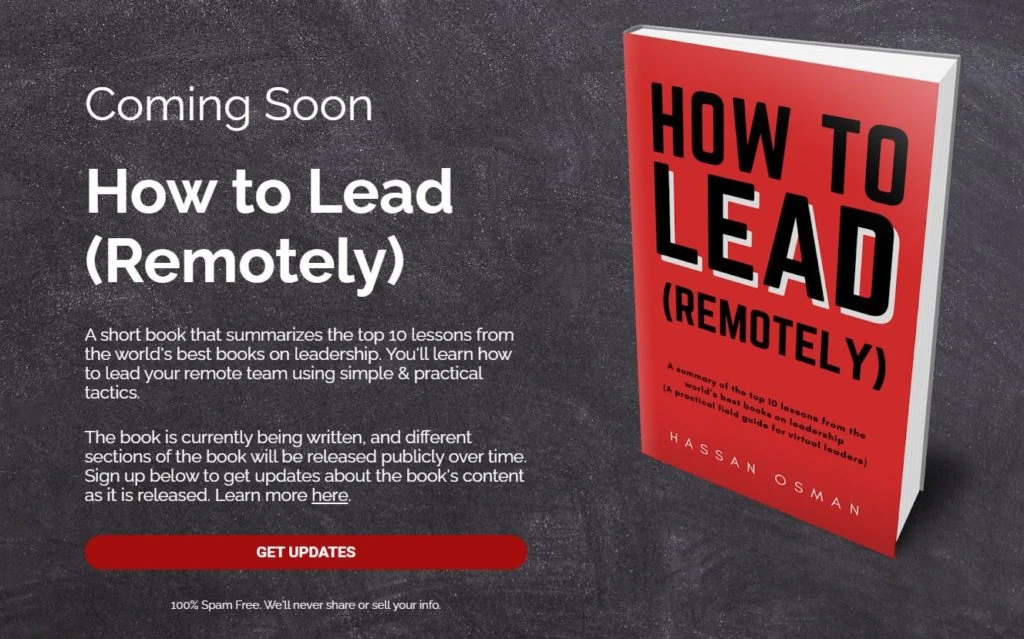
I’m writing a new book about remote leadership, and this is part of a series of posts that summarize some of the world’s best books on the topic. If you’d like to get an update every time I publish a new article, click here.
I recently finished reading “Multipliers: How the Best Leaders Make Everyone Smarter” by Liz Wiseman and Greg McKeown, and here are a few insights and takeaways from the book that I found quite insightful.
Multipliers: A Quick Summary
The book’s main idea is that there are two types of leaders: multipliers and diminishers. Multipliers are genius makers who focus on developing and nurturing the intelligence of the people they lead. Diminishers focus on themselves and stifle others because they dilute their people’s capabilities and intelligence.
Multipliers get twice the capability from their employees than do diminishers. The book explains how to become a multiplier.
One thing to note is that the idea of multipliers vs. diminishers is not binary, but it’s more of a spectrum and leaders can move along the diminisher-multiplier continuum.
The book’s research is based on interviews with around 150 executives from across different industries.
Multipliers: Basic Concepts
The book covers the five disciplines of multipliers, which include the following:
- The Talent Magnet: Attract and optimize talent
- The Liberator: Require people’s best thinking
- The Challenger: Extend challenges
- The Debate Maker: Debate decisions
- The Investor: Instill accountability
Each discipline has a set of practices that a leader can implement. For example, the third discipline (The Challenger) includes three practices: (1) seed the opportunity, (2) lay down a challenge, and (3) generate belief.
Multipliers: Three Main Takeaways for Remote Leaders
Here are three main takeaways that I thought were quite insightful from the book, and some tactical applications that I think would apply to remote leaders.
#1 Admit mistakes in public
Under the second discipline (The Liberator), Wiseman and McKeown explain that multipliers can generate quick learning cycles by admitting and sharing mistakes in public. By letting people know the mistakes you’ve made, and what you learned from them, you’ll create a safe environment. Showing vulnerability as a leader also promotes a team culture that doesn’t fear failure. One management ritual that the book references is a “screwup of the week” discussion during staff meetings.
Tactical tip for remote leaders: Consider a monthly roundtable update (during a standing virtual meeting) where each team member gets the chance to share one mistake that they made and what they learned from it.
#2 Don’t give answers
Under the third discipline (The Challenger), Wiseman and McKeown discuss how multipliers don’t just give their employees answers, even if they have a clear idea about direction. Instead, they “provide just enough information to provoke thinking and help people discover and see the opportunity for themselves.” They explain that the best leaders “shift the burden of the thinking to others.” This helps people discover their own path and grow by stretching their critical thinking skills.
Tactical tip for remote leaders: When an employee is facing a challenge and asks for feedback or advice, try asking questions instead of giving answers. For example, instead of saying “Here’s what I think you should probably do,” ask “Have you considered the following?”
#3 Delegate 51% of the vote
Under the fifth discipline (The Investor), Wiseman and McKeown give a great example about how John Chambers, the previous CEO of Cisco Systems, delegated responsibility to his VP, Doug Allred. He informed him that when it came to running his own area of the organization, he gets “51 percent of the vote” but that he’s still “100 percent responsible for the result.” The beauty of this simple arrangement is that it gave Allred full accountability of the results and a framework to consult with Chambers on the big decisions, but not necessarily on the smaller ones.
Tactical tip for remote leaders: When you need to delegate a task or a particular function to a team member, using the same phrase that Chambers used” “You get 51 percent of the vote and you’re still 100 percent responsible for the result,” could help in empowering them while also encouraging them to consult with you on the critical decisions.
Multipliers: Notable Reviews and Popular Highlights
The book is a Wall Street Journal Bestseller and is highly reviewed on Amazon, with over 1,300+ ratings that are generally positive.

Here’s one of the top reviews about the book, highlighting the point that some leaders might be “accidental diminishers” without even knowing it.

As for the most popular highlights (a unique feature in Amazon Kindle books that show what most people found helpful in the book), I was surprised that the book didn’t have any of those listed.
I’m guessing it’s probably a publisher restriction, so, unfortunately, I couldn’t include any here.
Would you like to get updates about other leadership books?
I’m writing a new book about remote leadership, and this is part of a series of posts that summarize some of the world’s best books on the topic.
If you’d like to get an update every time I publish a new book summary, click here.


Hi Hassan,
I like how you’ve reviewed and summarized this book; I’m looking forward to reading your other summaries as you progress along your journey.
Taking tactical points out of each is a very practical way to keep the lesson learned.
Do you also plan to go back and revisit each book / summary at a future date?
Cheers,
George
Thanks for following along George. I’m not sure yet. I might update them based on further analysis but my initial feeling is that if I do, they won’t change that much.
Best,
Hassan